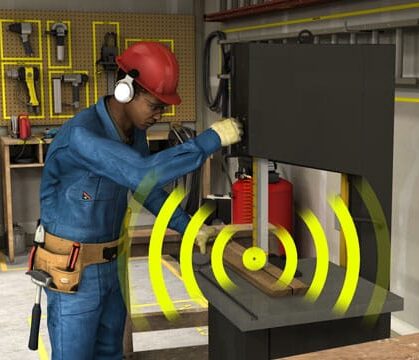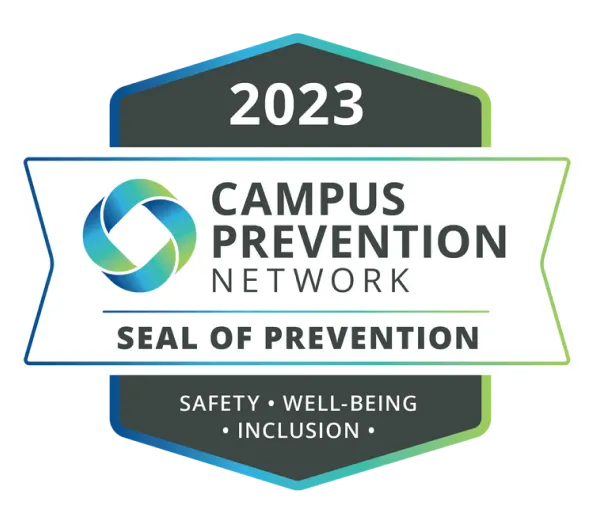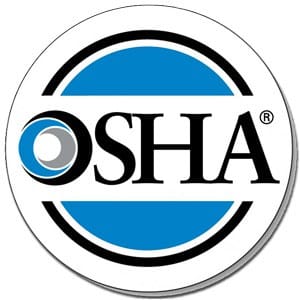December 5, 2023 min read

Top 10 Courses to Create a Safe Working Environment in 2024
Industry:
Solution:

As 2024 approaches, it’s essential to establish a proactive safety program that includes up-to-date, compliant safety training and best practices that protect your workers. Ensuring that your employees are well-versed in essential safety protocols not only safeguards their well-being but also contributes to a more efficient and productive workplace.
We’ve curated a list of the most utilized safety training courses deployed among our extensive base of over 24,000 customers. Explore the top 10 courses that will equip your team to effectively mitigate the risk of injuries and illnesses, fostering a safer work environment in 2024.
1. Bloodborne Pathogens
Bloodborne pathogens pose a serious risk in various industries. Bloodborne pathogens are microorganisms such as viruses or bacteria that, if present in blood, can cause disease in humans. These pathogens can be transmitted from an infected person to a healthy person by contact with infected blood or other bodily fluids.
Depending on the type of work being done, workplace practices and methods can be modified to minimize the chance of exposure. Proper personal protective equipment is a key component in preventing the transfer of bloodborne pathogens from an infected person to a healthy person.
This course covers how implementing Bloodborne Pathogens training equips employees with the knowledge to prevent and respond to potential exposure incidents: Bloodborne Pathogens
2. Hazard Communication GHS
Many workplaces use hazardous chemicals. But it’s not always easy to understand the various labeling requirements for these chemicals and the information provided to employees about the hazards these chemicals present.
Hazard Communication GHS is ranked #2 on OSHA’s top 10 violation list for the second year in a row, underscoring the persistent struggle to ensure compliance with safety protocols. This recurring trend spotlights the need for proper training that equips workers with the knowledge required to handle, mitigate, and communicate the risks associated with hazardous chemicals effectively.
This course provides an overview of the key issues covered in the Hazard Communication Standard, including the 2012 revision to align with GHS, and provides the information that employees need to know about the labeling of hazardous chemicals in all parts of their product cycle: Hazard Communication GHS
3. Hearing Conservation
Preserving employees’ auditory health is integral to their overall well-being. As noise-related issues in workplaces continue to be a concern, hearing conservation training becomes a vital component of a comprehensive safety program. Hearing Conservation courses not only educate workers about the hazards of excessive noise but also emphasize the importance of protective measures, such as proper use of ear protection.
Protect one of your employees’ most valuable senses with a better understanding of the anatomy of the ear, how sound works, how the ear interprets sound, the effects of noise on hearing, and annual audiometric testing.
In this course, employees can learn how to avoid occupational hearing loss by choosing and using the right hearing protection for their job: Hearing Conservation
4. Personal Protective Equipment (PPE)
The significance of Personal Protective Equipment cannot be overstated. Regardless of industry, providing employees with the knowledge of selecting, using, and maintaining PPE is critical. Every day, someone decides to give up their sight, hearing, fingers, toes, or worse to save a few seconds of effort.
Employees can use this course to educate themselves and their team on head protection, eye and face protection, hand protection, foot protection, respiratory protection, and hearing protection: Personal Protective Equipment
5. Electrical Safety General Awareness
Electrical hazards remain a persistent threat in various industries. In 2024, it remains critical to inform your team on effective ways to recognize, evaluate, and avoid electrical hazards.
Electrical Safety training ensures that employees understand the risks associated with electricity and are equipped with the knowledge to work safely around electrical equipment.

Topics covered in this course include personal protective equipment related to electrical safety, OSHA requirements for working on equipment, and electrical injuries such as shocks, burns, electrocutions, and falls: Electrical Safety General Awareness
6. Confined Space Entry Awareness
Confined spaces present unique challenges and hazards, such as sufficient space for a person to fit within and perform work, limited means of entry and exit, and a design that was not intended for continuous worker occupancy. Employees entering such spaces must be trained to recognize and mitigate risks effectively.
Confined Space Entry Awareness training plays a pivotal role in ensuring that workers are well-prepared to navigate confined environments safely, reducing the likelihood of accidents and injuries.
This course provides general awareness on confined spaces, differentiates between a permit-required and non-permit required confined space, and describes the job roles and responsibilities involved in confined space entry: Confined Space Entry Awareness
7. Hand Safety
Hands are among the most frequently injured body parts in the workplace. Because hands are used so frequently, hand safety can be taken for granted. The construction and manufacturing industries pose a particular risk to the hands due to the size and complexity of the equipment and machinery present.
Hand Safety courses teach employees how to identify and avoid hand-related hazards, emphasizing the importance of proper glove usage and hand protection.
This course will provide general hand safety awareness and discuss techniques for avoiding common hand injuries: Hand Safety
8. Slips, Trips, and Falls
Slips, trips, and falls account for a significant portion of workplace injuries. They commonly cause cuts, bruises, broken bones, back injuries, sprains, and strains. Hazards that cause slips, trips, and falls can be controlled and eliminated if they are identified, reported, and corrected.
With an increased focus on reducing workplace accidents in 2024, Slips, Trips and Falls training remains a foundational element of any robust safety program.
This course describes common causes of slips, trips, and falls, how they can be prevented, and first aid procedures for fall injuries: Slips, Trips, and Falls
9. Ergonomics for Industrial Environments
Every year, hundreds of thousands of workers are diagnosed with musculoskeletal disorders, or MSDs. Understanding how to recognize and reduce the stress on your body from your daily work environment will help reduce the likelihood of developing an MSD.
As technology continues to shape the modern workplace, the importance of ergonomic considerations becomes increasingly evident. Ergonomics training addresses the design of workspaces and equipment to optimize human performance and prevent musculoskeletal disorders.
This brand-new course discusses MSD prevention techniques in industrial environments, including engineering and administrative controls as well as motion-based, physical, environmental, and psychological risk factors associated with MSDs: Ergonomics for Industrial Environments
10. Lockout Tagout for Authorized Employees
After a year hiatus, Lockout/Tagout is back on OSHA’s Top 10 Violations list in 2023. Lockout Tagout procedures are critical for preventing unexpected startup of machinery and equipment. When machines or equipment are being prepared for service or maintenance, they often contain some form of “hazardous energy” that can cause harm to people in the area. When done properly before equipment service or maintenance, lockout/tagout procedures control hazardous energy and protect workers from harm.
Authorized employees trained in Lockout Tagout procedures ensure that energy sources are properly controlled during maintenance or servicing activities, reducing the risk of accidents.
This course describes hazardous energy types and energy control procedures, including preparation, shutdown, isolation, lockout, stored energy check, verification, and release of lockout: Lockout Tagout for Authorized Employees
Bonus Course: Fire Extinguisher Safety
Given the unpredictable nature of emergencies, companies prioritizing fire extinguisher safety contribute to a safer work environment and better preparedness for unforeseen events.
Fire Extinguisher Safety training empowers employees to use fire extinguishers correctly, potentially preventing small fires from escalating.
Use this course to educate your team on the fire tetrahedron, the types of fires that can occur in the workplace, and how and when to use a fire extinguisher. This course also describes when to evacuate and provides some proper maintenance tips for fire extinguishers: Fire Extinguisher Safety
Empower Your Team: Path to a Safer Work Environment
The top 10 safety training courses for 2024 mentioned above cover a wide range of topics, enabling your employees to take a proactive approach to prevention and emergency preparedness. Keeping your team updated with the latest safety training courses is an investment in their personal and professional well-being. Contact us today to see how you can equip your workforce with the knowledge and skills necessary to mitigate risks and create a safer work environment.
Explore more valuable resources to enhance your safety program in 2024:
Learn more about our online safety training courses based on OSHA & EPA requirements and general best practices.

















